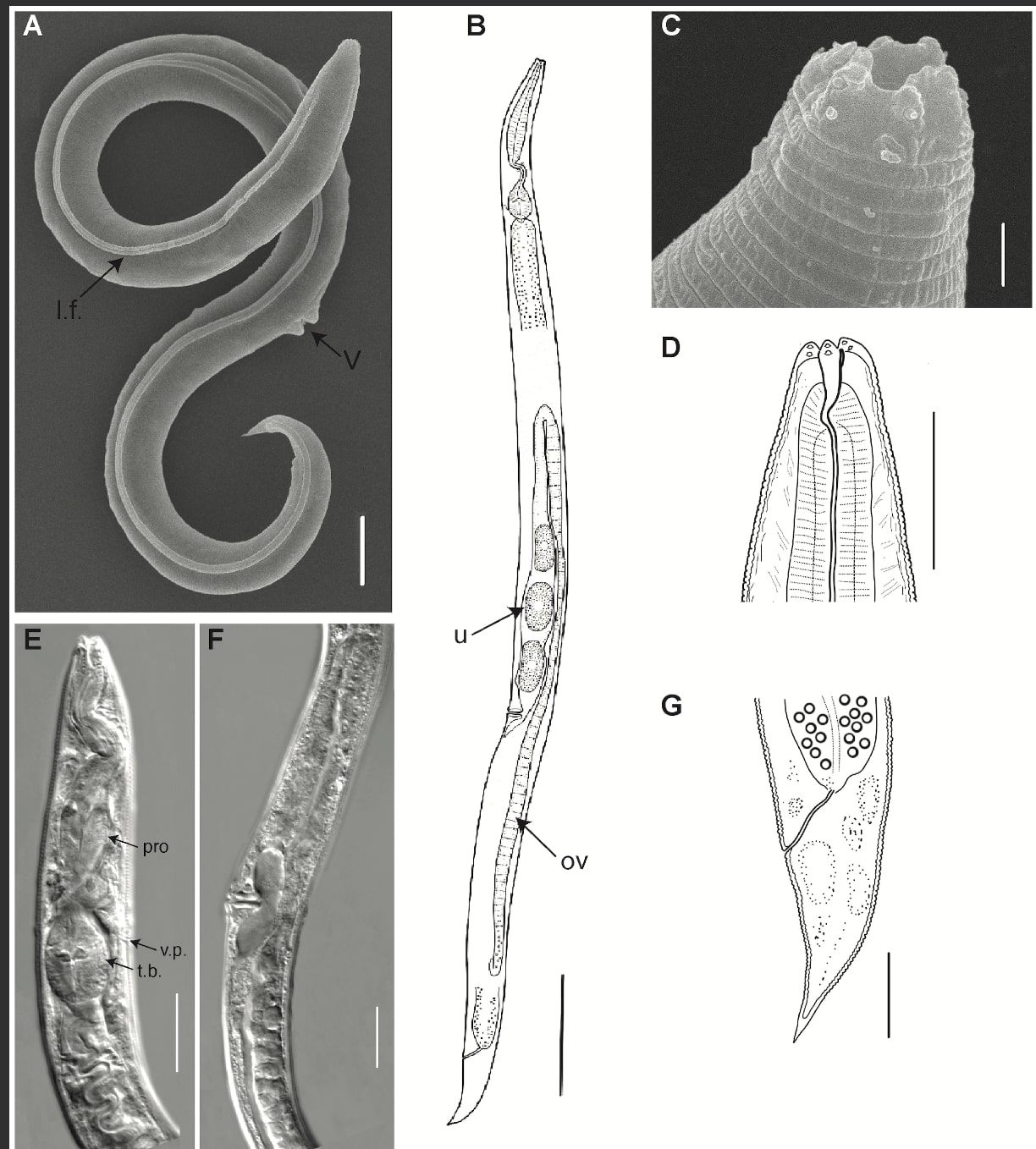Precise radiocarbon dating in a peer reviewed Journal show that Panagrolaimus individuals worms remained in cryptobiosis since the late Pleistocene (~46,000 years) and were revived in 2018. Phylogenetic inference based on our genome assembly and a detailed morphological analysis demonstrate that they belong to an undescribed species, which we named Panagrolaimus kolymaensis. Comparative genome analysis revealed that the molecular toolkit for cryptobiosis in P. kolymaensis and in C. elegans is partly orthologous. Biochemical mechanisms employed by these two species to survive desiccation and freezing under laboratory conditions are similar. The experimental evidence also reveals that C. elegans dauer larvae can remain viable for longer periods in suspended animation than previously reported. The findings demonstrate that nematodes evolved mechanisms potentially allowing them to suspend life over geological time scales.
Survival in extreme environments for prolonged periods is a challenge that only a few organisms, are capable of. It is not well understood, which molecular and biochemical pathways are utilized by such cryptobiotic organisms, and how long they might suspend life. Here, we show that a soil nematode Panagrolaimus kolymaensis, suspended life for 46,000 years in the Siberian permafrost. Through comparative analysis, we find that P. kolymaensis and model organism C. elegans utilize similar adaptive mechanisms to survive harsh environmental conditions for prolonged periods. The findings here are important for the understanding of evolutionary processes because generation times could be stretched from days to millennia, and long-term survival of individuals of species can lead to the refoundation of otherwise extinct lineages.
What Were Humans Doing When The Worms Were Active Before Freezing?
46,000 years ago was the late stone age. Early European modern humans (EEMH), or Cro-Magnons, were the first early modern humans (Homo sapiens) to settle in Europe, migrating from western Asia, continuously occupying the continent possibly from as early as 56,800 years ago. They interacted and interbred with the indigenous Neanderthals (H. neanderthalensis) of Europe and Western Asia, who went extinct 40,000 to 35,000 years ago.
The worms were around before Neanderthals were extinct.
The first wave of modern humans in Europe from 45,000-40,000 (Initial Upper Paleolithic) left no genetic legacy to modern Europeans. 37,000 years ago a second wave succeeded in forming a single founder population, from which all EEMH descended and which contributes ancestry to present-day Europeans.
The gap between the first and second wave of cro-magnon attempts to settle Europe is longer than recorded history. The earliest chronologies (of recorded history) date back to the earliest civilizations of Early Dynastic Period of Egypt, Mesopotamia and the Sumerians, which emerged independently of each other from roughly 3500 BCE. Earliest recorded history, which varies greatly in quality and reliability, deals with Pharaohs and their reigns, as preserved by ancient Egyptians. This was 5500 years ago. 46000 years ago is 8 times longer than recorded history.

Prehistory traditionally refers to the span of time before recorded history, ending with the invention of writing systems. Prehistory refers to the past in an area where no written records exist, or where the writing of a culture is not understood.
Protohistory refers to the transition period between prehistory and history, after the advent of literacy in a society but before the writings of the first historians. Protohistory may also refer to the period during which a culture or civilization has not yet developed writing, but other cultures have noted its existence in their own writings.
More complete writing systems were preceded by proto-writing. Early examples are the Jiahu symbols (c. 6600 BCE), Vinča signs (c. 5300 BCE), early Indus script (c. 3500 BCE) and Nsibidi script (c. before 500 CE). There is disagreement concerning exactly when prehistory becomes history, and when proto-writing became “true writing”. However, invention of the first writing systems is roughly contemporary with the beginning of the Bronze Age in the late Neolithic of the late 4th millennium BCE. The Sumerian archaic cuneiform script and the Egyptian hieroglyphs are generally considered the earliest writing systems, both emerging out of their ancestral proto-literate symbol systems from 3400 to 3200 BCE with earliest coherent texts from about 2600 BCE.

Brian Wang is a Futurist Thought Leader and a popular Science blogger with 1 million readers per month. His blog Nextbigfuture.com is ranked #1 Science News Blog. It covers many disruptive technology and trends including Space, Robotics, Artificial Intelligence, Medicine, Anti-aging Biotechnology, and Nanotechnology.
Known for identifying cutting edge technologies, he is currently a Co-Founder of a startup and fundraiser for high potential early-stage companies. He is the Head of Research for Allocations for deep technology investments and an Angel Investor at Space Angels.
A frequent speaker at corporations, he has been a TEDx speaker, a Singularity University speaker and guest at numerous interviews for radio and podcasts. He is open to public speaking and advising engagements.


Did they check if these worms are part of the Master? COVID will seem like a joke if they allow this one to leak into the wild.